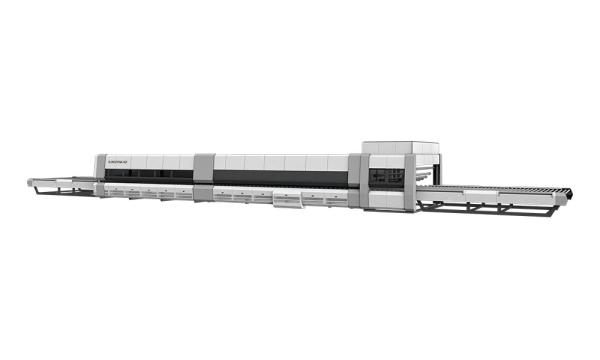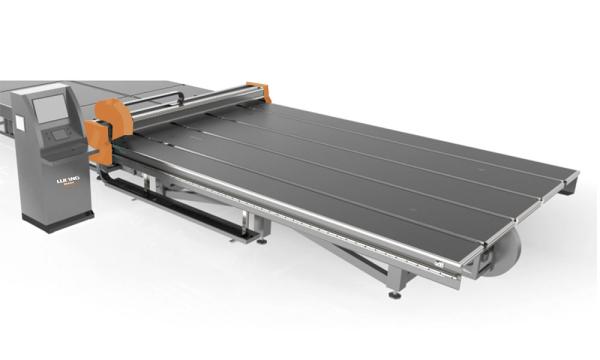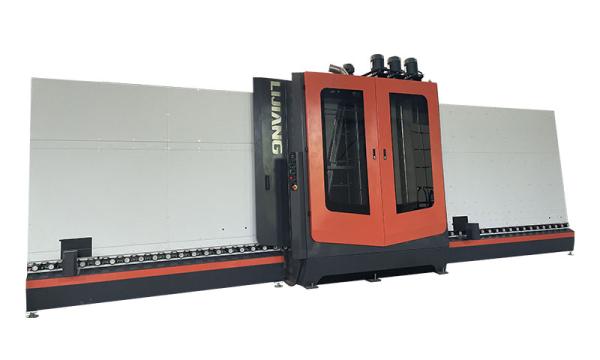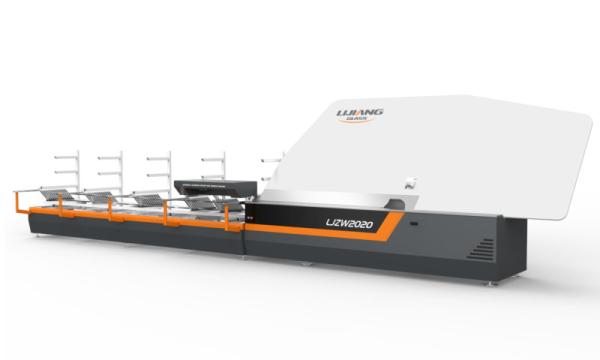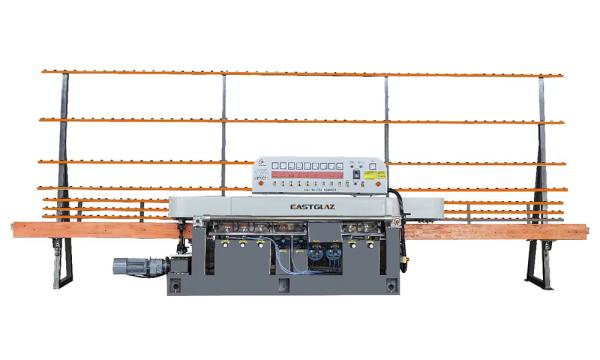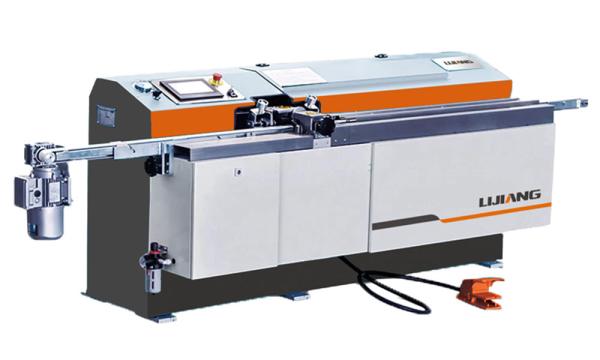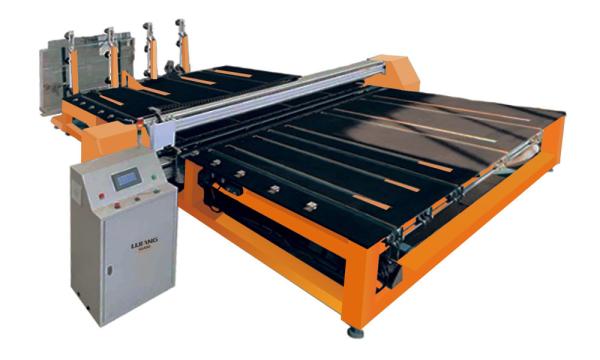Flat Glass Tempering Furnace
EG3020
Maximum loading area:3000mm×2000mm;
Maximum processing size :2000mm×1000mm;
Minimum processing size :300mm×300mm;
Horizontal Roller Hearth Passing Flat Glass Tempering Furnace With Vortech Convection System.
Applicable Glass Types:
Toughened coated glass;
Clear float glass;
Tinted glass;
Patterned glass;
Silk screen printing glass;
Description of main components of equipment
Loading and unloading tables
The loading and unloading tables are similar in structure, and are composed of customized steel frame.
It is equipped with cylinder transmission mechanism lifting table, which can lift synchronously and stably, and is equipped with universal wheel.The roller is composed of rubber roller and rope roller. High quality coating is used to ensure that the glass surface is not scratched.In terms of transmission control, the stepping time is adjustable, the conveying speed is adjustable,the furnace feeding interval is controllable, and the sensitive glass detection device is equipped.
The loading and unloading tables are made of rubber-covered and Kevlar-rope rollers. When the glass is put onto the rollers, the glass will be conveyed automatically to the entrance of the furnace where it will be in the ready-to-enter position, and the rollers will then stop moving. It will send the glass into the furnace once the computer control system gives enter command. The unloading table is the similar as the loading table. When the glass is transported to the end of the conveyor,the rollers will stop, and the glass can be taken away by hand, or by robot, if there is available atthe customer’s factory.
Heating system
The structure of the heating section is of a double-layer box type covered with thermo-insulating material. Inside this section there is a conveyor system with high temperature resistant ceramic rollers, which are imported from well-known manufacturers. Heating elements are installed on the upper layer and lower layer of this section, and the “Exposed Matrix Heating Design” is adopted.
Compared with the traditional “radiant plate heating design”, this matrix system can improve the temperature uniformity and heating efficiency in the furnace, and the heating elements are easy to replace. [The inside of the upper layer of the heating section is covered of 310S stainless steel with strong corrosion resistance.The insulation layer is made of high-quality aluminum silicate plate. After scientific sorting and six side polishing, it has better heat storage capacity, can greatly improve the heat utilization efficiency. The heating section can open and close, and the upper heating section can be raised by the electric screw lifting device.
In the production process, before the glass enters the heating section, the front door of the heating section opens, the rollers of the loading table and the ceramic rollers of the heating section rotate at the same time, and the glass will be conveyed into the heating section. When the glass completely enters the furnace, the front door will close automatically, and the glass will oscillate back and forth at a distance calculated automatically by the control system to ensure that the glass can be heated evenly. After heating, the back door will open and the ceramic rollers will convey the glass to the cooling system for tempering and cooling.
Passing section
The Passing technique is used to produce the glass thickness less than [6]mm. Combined with Lijiangtech’s original electric energy control technology, it can flexibly allocate the electric energy of heating system and quenching system in the process of toughening thin glass. In the production of thick glass, there is no need to turn on the passing section blower. The passing section can reduce the energy consumption. It’s no need to open the bigger blower after the passing section. It can almost save 60% energy of the quenching.
Flat cooling section
The alloy sections and steel sheet that we are using are tempered metals to avoid any possible deformation due to heat welding. And this ensures effective air distribution. Rational nozzle aperture and arrangement of air hole guarantee the glass even cooling. The upper and lower quenches are linked and combined with individual drives, which can actually control the accurate height for air nozzle of quenches. Matched with balance control of upper and lower air amount,the top and bottom of the glass can get the best air pressure in both sides, so as to ensure the flatness of tempered glass.
Electric control system
The control system includes the followings:
Process parameters storage and recall, such as glass thickness, size, color, glass type and maybe different sources of float glass and etc. Whenever you temper a new order for different thickness,
size, color, type, source and etc., you just enter the process parameters, and the system will save these process data. Next time, when you have the same order, you can re-call the data, and the machine will automatically use the stored processing data to produce.
After the shift of a day, the furnace will be in the stand-by status; an average of 15°C/hour will be lost in normal weather conditions. The ceramic rollers will be kept running.And ahead of working time on the next morning, the system can start automaticaly to heat up to the desired working temperature until the operator begins the production. This needs around 30min.
Main drive control system is accomplished by the inverter system, which is controlled by computer.Control for roller driving system. (Note: the driving belt mode for the heating section adopts round belt and for the quenching adopts [round belt] mode)
The main screen page displayed on the monitor during normal production. The contents displayed directly in English (or other available languages) are for the status of glass in the furnace, driving system, temperature at each zone, time of heating, quench and cooling, set point of fans and length sum of pieces of glass in the furnace. This screen is for the operator’s notice.
The process parameter screen records when the button is pressed by the operator, temperature set point of upper and lower furnace, pressure set point of fans, quench time and cooling time set point. These screens are frequently used for normal operation. Maintenance screen is used by maintenance people to test every part of the system. System parameter screen is used by the manufacturer, in order to test the machine, it is not for any other people using, and otherwise the machine may be damaged. The system also has some supplementary screens.PLC has reserved communication interface, which provides possibility for future factory automation upgrade.
Vortech convection system
Vortech convection system is our unique convection system(Top). The air is blown out from the Vortech Blower and heated by the heat circulation system and the waste heat in the furnace, and the hot air flow brings the heat directly to the glass surface. Combined with the “Exposed Matrix Heating Design” and refined diversion design, the production time of 6mm double silver Low-E glass can reach 280 ~ 300s / batch. A perfect convection system, with the lowest power consumption and maintenance cost when we compare it to other competitors. The convection system has mature design, stable structure, with convenient daily maintenance.

